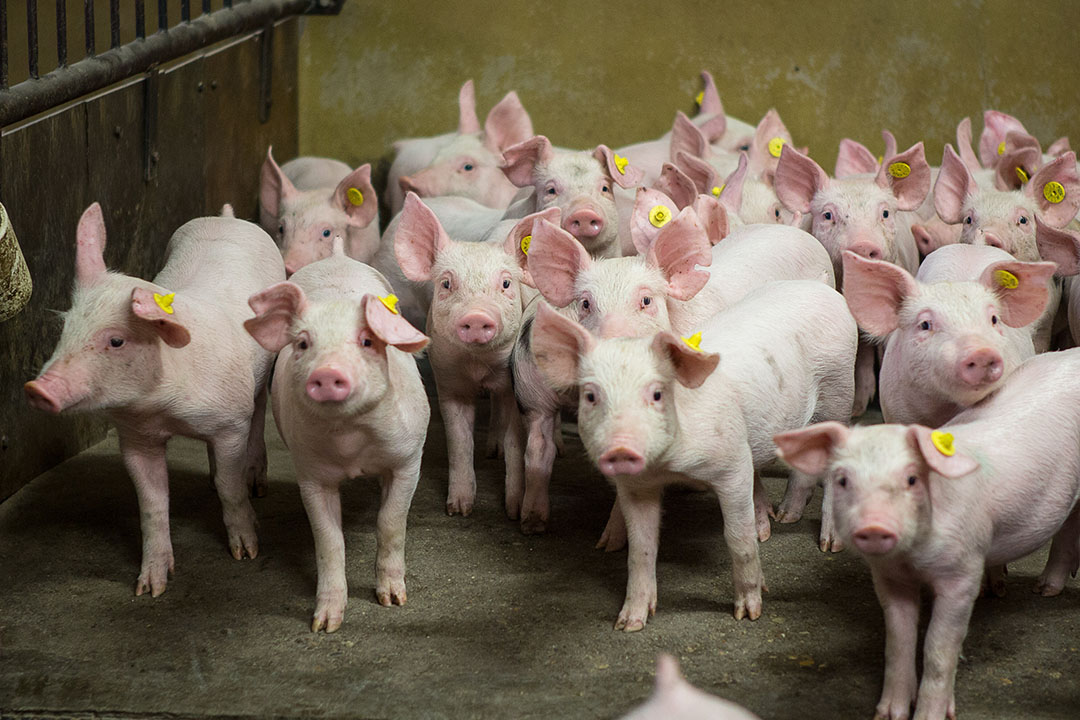Oyster mushrooms: A diarrhoea remedy for piglets

The feed industry is focusing on alternatives to reduce the use of antibiotics as growth promoters and zinc oxide as a diarrhoea remedy in piglet diets. Thanks to its immunomodulation properties, among other properties, the oyster mushroom is one of the potential alternatives.
Zinc oxide (ZnO) is usually recommended for inclusion during the first 2 weeks over weaning to prevent post-weaning diarrhoea in pigs. However, due to its low absorption, most ZnO is excreted in faeces, which is detrimental to the environment.
On the other hand, whereas therapeutic zinc oxide is not approved for use, antibiotics are an alternative to the control of E. coli infections post-weaning. However, these antibiotics are being banned for their effects on antimicrobial resistance. In humans, several studies (involving animal models) have shown that edible mushrooms have immune modulating properties, including β-glucan-induced anti-inflammatory effects, enhanced NK (Natual Killer) cell activity, improved dendritic cell maturation and function, and increased cytokine production in patients with ulcerative colitis and Crohn’s disease. Mushrooms contain secondary metabolites such as alkaloids, lactones, polyphenols, sesquiterpenes, sterols, terpenoids, β-glucans and glycoproteins. These metabolites are responsible for immunomodulation, and have anticholesterolemic, anticancer and antioxidant properties.
 Antibiotic Reduction – special publication
Antibiotic Reduction – special publication
Moving away from antibiotics can be challenging and requires a new way of thinking, adapting feeding practices and biosecurity plans, for example. This special edition explores the latest methods for raising healthy livestock without the use of preventive antibiotics.
Reduction in incidences of diarrhoea incidence in weaner piglets
Researchers at Jilin Agricultural University found valuable effects of supplementing piglet diets with oyster mushrooms.
The mushrooms were included in 3 doses:
- 5 g/kg,
- 10 g/kg, and
- 15 g/kg.
A total of 100 crossbred (Duroc×Large white×Landrace) weaner piglets were used. The inclusion of mushroom at 5 g/kg feed resulted in a 51% lower diarrhoea compared to the control group, while an inclusion of 15 g/kg resulted in 55% lower incidence of diarrhoea. The researchers attributed the reduction to the presence of bioactive compounds such as glucans, alkaloids, phenols and other active ingredients that can reduce the enteric bacteria (Coliform, E. coli, etc.) population and activities in the intestines of piglets. The prebiotic properties of this mushroom resulted in high production of short chain fatty acids (butyrate, propionate and acetate). The bacteriostatic properties of butyrate result in a better immune response, and a healthy gut – contributing to a reduction in the incidence of diarrhoea.
 Pathogens & Prevention – special publication
Pathogens & Prevention – special publication
Diseases are always just a stone’s throw away from any livestock herd/flock and producing healthy and safe animal products is key for a successful business. In this special we focus on how to keep diseases at bay via biosecurity measures, management and nutritional interventions.
Increased gut microflora in piglets
Their findings showed that supplementing the diet with oyster mushrooms increased intestinal microbial population and diversity. The most abundant microbes in the treated groups were the Bacteroidetes phylum (which mainly produces acetate and propionate) and the Firmicutes phylum (for butyrate production). The high fibre content of mushrooms is less digestible in the upper GIT as it lacks fibre-digesting enzymes. However, microbes in the large intestine can ferment these fibres to synthesize SCFAs such as acetate, butyrate and propionate. These SCFAs lower the hindgut pH, creating unfavourable conditions for most pathogenic bacteria – thus promoting gut health. Butyrate also serves as the main source of energy for colonocytes, helping with the maintenance of gut homeostasis and intestinal epithelial integrity; its bacteriostatic properties help improve the immune response. Their study has shown that oyster mushrooms act as a prebiotic that favourably affects the composition and function of the host intestinal microbiota with enrichment in carbohydrate metabolism and increased SCFA production, conferring more intestinal epithelial barrier protection. The butyrate levels increased with the increase in dietary mushroom levels. The highest total SCFAs levels occurred at an inclusion level of 10 g/kg (Table 1).
Immunomodulation
The researchers focused on immunoglobulins and cytokines as they regulate the immune system. In this study, oyster mushrooms stimulated the production of cytokines (interleukin-2 and tumour necrosis factor-α) and immunoglobulins (IgA, IgG, and IgM). Cytokines are involved in pro-inflammatory and immune function: the onset, activation and regulation of inflammation, innate and specific immune response, and acute phase reactions. Immunoglobulins are a critical part of the immune response which specifically recognise and bind to antigens, such as bacteria or viruses, and help to destroy them. In previous studies, the secondary metabolites in mushrooms have been reported to have special properties: an immunomodulation effect and anticholesterolemic, antioxidant and neuroprotective effects.
Piglets’ digestibility and growth performance
During weaning and immediately after weaning, a piglet’s digestive tract is not well developed and hence the digestion of most feed ingredients is compromised. In the present study, the digestion of protein, fibre and gross energy were increased by the addition of mushroom (see table 2). Researchers suggested that the improvement in microbial composition enhances the digestibility of crude fibre and provide energy through production of SCFA. The bactericidal effects of SCFA also improves gut health and intestinal epithelial integrity. On the other hand, mushrooms contain high fibre content and these dietary fibres may decrease intestinal transit time – thus promoting better nutrient digestibility. The inclusion of oyster mushrooms in the diet of piglets also increased feed intake, improved growth rate and feed-to-gain ratio. Better feed conversion and consequent growth rate were attributed to improved nutrient digestibility and gut health.
 Weaning – special publication
Weaning – special publication
Weaning is a time of many changes for young piglets. So what can be done to make weaning a smooth process?
The potential of oyster mushrooms
Weaning is a challenge in the early life of piglets: it exposes piglets to several disorders such as diarrhoea, as well as impaired intestinal metabolism and immune functions – subsequently affecting growth performance.
This study found that the dietary inclusion of 5 to 15 g/kg oyster mushrooms has the potential to reduce the incidence of diarrhoea and increase the overall performance of piglets. With the use of zinc oxide to prevent diarrhoea in piglets being discouraged in the wake of its hazardous effects on the environment, oyster mushrooms are one of the potential alternative solutions.
Join 26,000+ subscribers
Subscribe to our newsletter to stay updated about all the need-to-know content in the feed sector, three times a week. Beheer
Beheer









 WP Admin
WP Admin  Bewerk bericht
Bewerk bericht